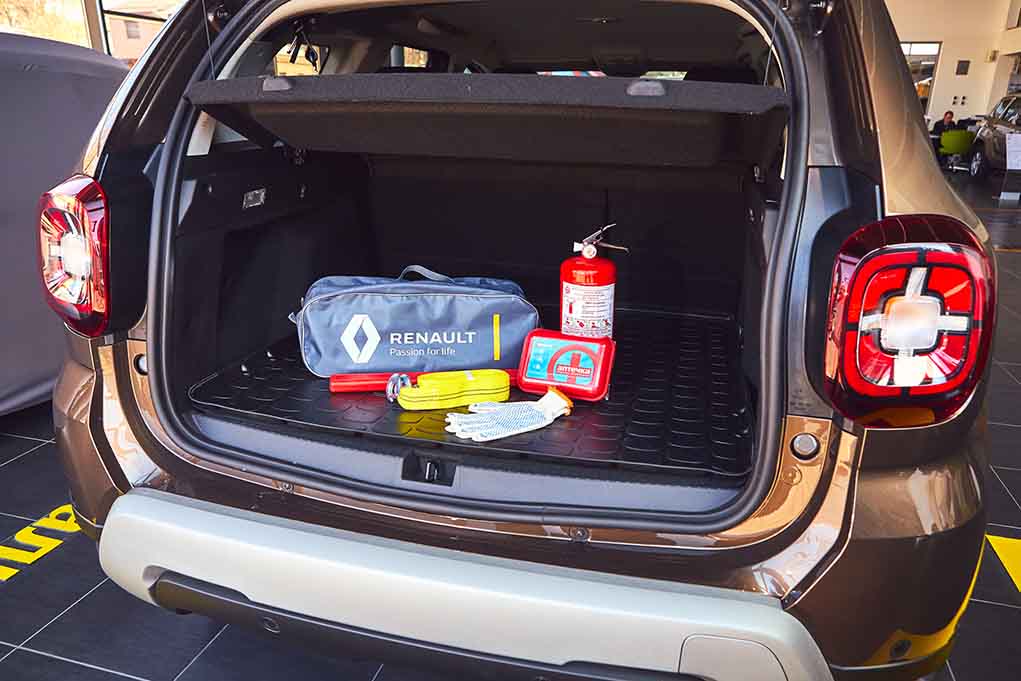
Emergency Kit For Your Car — Why You Need One & What To Put In It
(NRPI.org) – Do you own an emergency kit for your car? When driving a vehicle, a roadside emergency kit is essential because an emergency is something you have no control over. But what are the vital inclusions in an emergency kit? When building an emergency kit for your car, include basic items that your family might need in the event of an emergency, from necessary car emergency supplies to first-aid supplies.
The Importance of Building an Emergency Kit for Your Car
It’s important to have an emergency kit in your car, no matter where you live – for every day or more extended vacations. While road trips can be liberating, no one anticipates an emergency, and that makes investing in your car safety while traveling essential. Here’s why you need an emergency kit in your car:
You’ll Have Peace of Mind
Having an emergency kit in your car provides peace of mind and comfort because you have a backup plan just in case of car trouble or an accident. Having a car emergency kit with all the necessities you might need will keep you calm while driving because you will have nothing to worry about.
You Can Easily Attend to Injuries and Keep Safe
A roadside emergency kit helps you handle any car trouble or possible injuries quickly and efficiently. Rather than waiting for emergency medical services, you can contain or manage the situation by offering fast assistance.
A Kit Ensures You Can Easily Communicate and Get Fast Assistance
It’s also important to include communication supplies when building an emergency kit for your car in case an emergency happens in a remote area. For instance, having a radio with backup batteries will let you know what’s happening around you so you can make an informed decision. Also, having portable chargers in your kit can help you contact people for help in an emergency.
Important Basics To Include in Your Emergency Kit
In some emergencies, you might need to survive on your own for a while. Being prepared with an emergency kit means having basic items that your household might need in case of an emergency, from food to water and other supplies. Every car should have an emergency kit in the trunk, and it should include:
- An inflated spare tire, tripod jack
- An adjustable wheel wrench and pliers
- A portable jump starter or jumper cables
- A flashlight with extra batteries
- A compass and local map
- A fire extinguisher
- A blanket
- Duct tape
- A cellphone with a charger and backup battery
- Water for drinking and sanitation purposes
- Non-perishable food, especially if you’re driving for a long distance
- Triangle reflectors, road flares, or a brightly colored cloth that will make your car more visible
- A medical kit with all medications for your specific health condition – for instance, an extra inhaler will be necessary if you’re asthmatic
- A first-aid kit with various essentials, including tape, bandages, gauze, instant cold compress, antibiotic ointment, non-latex gloves, scissors, aspirin, thermometer, tweezers, safety pins, and hydrocortisone
Additional Car Emergency Supplies
When building an emergency kit for your car, you can consider these additional emergency supplies:
- Change of footwear and extra clothing
- Non-prescription medications like antacids and pain relievers
- Hand sanitizer, garbage bags, and toiletries
- Traveler’s checks or some cash
- Emergency and family phone numbers
- Battery-operated FM/AM frequency radio
- Necessary documentation like copies of car insurance policies saved electronically or stored in a waterproof container
- Depending on the weather, you can include cold-weather items such as a shovel, ice scraper, snow brush, windshield washer fluid, cat litter for traction, and extra warm clothing.
Once you have built your kit or assembled all you need for your roadside emergency kit, keep your items together in the trunk so they don’t scatter or roll around. You can opt to use a backpack or a simple cardboard box. It’s crucial to ensure that your emergency kit is quickly accessible in case you need it in a hurry. Lastly, maintain your kit by re-evaluating your needs and replacing expired items.
Copyright 2022, NRPI.org














